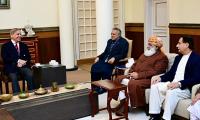A language dies when nobody speaks it anymore. Why a language dies is a pertinent question asked by linguists and activists alike. Linguists and activists across the world have shown interest in focusing on the issue of ‘language death’ and ‘language vitality’ over the last three decades.
To understand how endangered a language is or, in other words, why a language dies, experts assess the vitality of a language – understand and measure the factors that impact the vitality and endangerment of a language.
In 2003, the Unesco Ad Hoc Expert Group on Endangered Languages came up with nine concrete factors in a document titled ‘Language vitality and endangerment’. These factors are: intergenerational language transmission, absolute number of speakers, proportion of population of the speakers within the total population, trends in use of existing language domains, response to new media and domains, materials available in the language for education and literacy, official status and governmental language policies, community members’ attitudes towards their language, and amount and quality of documentation.
The significance of these factors varies spatially and temporally given the sociocultural and political contexts. These factors are also interdependent. One factor may be the cause of another or its effect. For instance, community members’ attitude towards their language may cause the break in intergenerational transmission. This may also be triggered by governmental policies when they do not provide literacy and education in that language, and resultantly, the language does not pass from one generation to another.
The factors listed by the Unesco ad-hoc group are among the many factors linguists have come up with while assessing the vitality of a language. A language will die when all its speakers die. While this happens rarely now, it happened to small communities in the past, where they had fallen victims to famine, earthquakes, floods or were killed by colonialists.
In many cases, people may still be alive, but their native language is no longer alive. This is common around the world and happens when the culture of a people dies and is replaced by another culture. Every language has a culture. Thus, when the culture dies or is replaced, the language is replaced too. This process is slow, soft and is known as cultural assimilation.
British linguist David Crystal has put all the factors of language vitality and endangerment into two broad categories: factors that impact the physical wellbeing of speakers and factors which change people’s culture. When one culture is influenced by a dominant culture, its speakers gradually develop new behaviours.
The dominance of one culture over another has multiple triggers such as demographic submersion as in the case of colonization when new settlers swamp indigenous people’s territories. The dominant culture thus brings its language with more power. This poses pressing challenges to indigenous people’s culture and their language.
In many cases, especially in the post-colonial era when neocolonialism is spread all over, cultural assimilation does not necessarily need settlement of the new population on the territories of the dominated ones to change their culture. This could happen with mass media, education, power dynamics, state policies, technology, economic opportunities, and so on. One language or a couple of languages are provided with the tools of domination and are imposed on other languages. This is common everywhere and is more rigorous in states where the ‘nation building’ project is still going.
Crystal explains that when one culture assimilates to another culture, the entire sequence of its impacts on the endangered language is categorized by three stages.
At the first stage, immense pressure is put on the people to speak the dominant language through political, ideological, social and economic means which include not only soft coercion but also incentives such as economic opportunities, laws, policies, recommendation, nationalism et al. This happens top-down but its impacts could occur bottom-up as well as people gradually feel ashamed of speaking their language and feel pride in shifting to the dominant language. It is quite common everywhere in Pakistan, and the stark example is that of Punjabi, which is the language of the majority but is fast losing its popularity.
With this initial pressure, the second stage emerges where bilingualism rises in the community. Speakers of the endangered language begin to speak the dominant language but still have competence in their language. Bilingualism is now being advocated all over the world by many scholars, educationists, and community activists.
What they mean by bilingualism or multilingualism is to maintain an equilibrium for both languages: the native language of the people and the dominant language. Equilibrium is meant to provide opportunities for the endangered language in education, media, communication, literary tradition, power distribution, job opportunities to the people, literacy development as compared to the dominant language.
Unfortunately, this equilibrium is not brought, and the dominant language is given more impetus to assimilate the dominated one. This leads to the critical third stage where the endangered language is replaced by the dominant one.
New generations shift to the dominant language and attach a feeling of shame to their mother language. Gradually, the older generation speaks their language rarely and regards it as irrelevant for their children – people living in urban Punjab are one example. This is what is known as ‘language shift’ when a population leaves its language for a dominant one. And, it is also a form of language death.
Now as we see, it is impossible to deny the first stage given globalization and its impacts. The third stage is the most critical one and is responsible for the slaughter of the mother languages. The focus must be on the second stage.
Experts emphasize the equilibrium at the second stage for maintenance and revitalization of an endangered language. To this end they assert that policies, tools, strategies and mechanisms should be made to provide a ‘level playing field’ for the endangered language for them to sustain and thrive so that the two languages may coexist.
It is evident from the ideology and speeches of past and present leaders of Pakistan and from various educational and ideological policies (including the Single National Curriculum) that the country’s elite has constantly been applying this cultural assimilation and thus pushes the many languages to the verge of the third stage by design so that they may achieve the ‘unity’ among all Pakistanis by a ‘hegemonized homogenization’ depriving Pakistan of its cultural diversity and to make it an enforced unnatural ‘nation’ based on one language and one religion. We see this strategy has fired back whether in the form of Bangladesh born out of the ‘one-nation-one-language womb’ or the rising sentiments of resentment among other nationalities in today’s Pakistan.
Urdu is given an encompassing upper hand in media, education, politics or religion. This has put endangered languages in a situation where they can hardly survive. The policy has also been proven detrimental to the majority languages – Punjabi, Pashto, Sindhi and Balochi – as well for they are not given an equal official and educational status in comparison to Urdu.
A trilingual educational model for Pakistan seems the way forward. Education from early grades to higher secondary education needs to be provided first in the mother language. Urdu and English should be added to it gradually when the student gets promoted to higher grades.
These thoughts were shared by the writer at a panel ‘Our Disappearing languages’ at the ninth Islamabad Literature Festival, in Islamabad in early November.
The writer heads an independent organisation dealing with education and development in Swat. He can be reached at: ztorwali@gmail.com
Many people believe that in future, AI will play an even more significant role in their lives
In April 2024, three Chinese and one Belarusian company were sanctioned for exporting missile-enabling technology to...
Pakistan has second highest neonatal mortality in world; in education sector, country's 26 million kids are out of...
Key actors in global power politics are US, China, Russia, European Union, and emerging powers such as India and Brazil
Maulana Fazl manages to bring together factions that historically stand opposed
NASA says August 2024 set new monthly temperature record, capping Earth’s hottest summer since 1880







